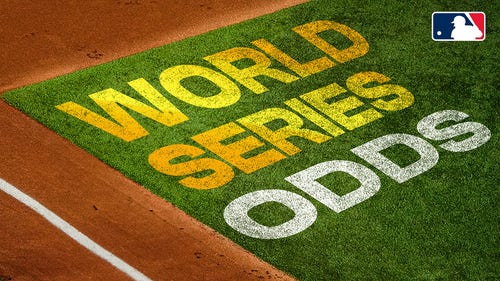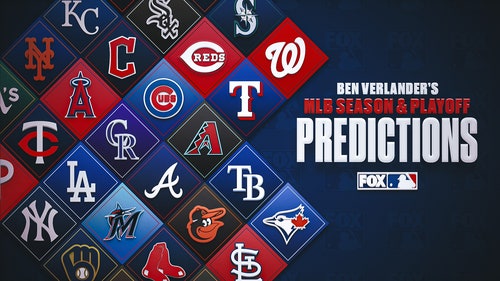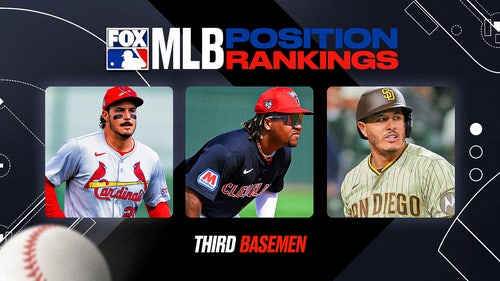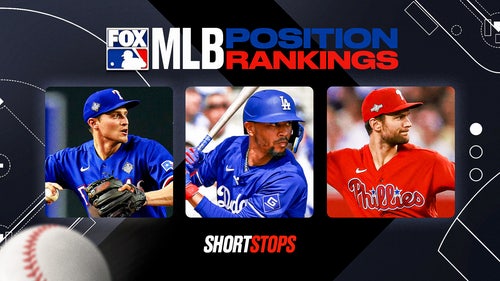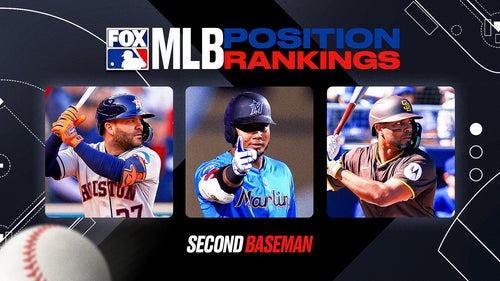
Will the Minnesota Twins be the best team to draft #1 overall?
Rick Osentoski-USA TODAY Sports
The Minnesota Twins currently sit in first place in their division and picking first overall in less than a month, would they be the best team to ever have the first pick in the MLB Draft?
The Minnesota Twins were 59-103 last season, and that "earned" them the #1 overall selection in June's MLB draft. After winning their weekend series against the Indians, they moved into first place less than a month ahead of the draft.
That led to the question – how many teams have been in first place when they selected first overall in the draft? Moreso, which teams performed best the season they had the #1 overall selection?
2017 Minnesota Twins
Last season's Twins roster was certainly under performing, and there's no two ways around that. Ervin Santana was the only pitcher for the team that made a start and finished the season with under a 5.00 ERA – even players who made a single start among a season of primary relieving all finished with 5+.
The lineup wasn't much better, though the youth of the team was what shined through. The team that spent much of the second half in the starting lineup featured five players under 25 years old, which does explain some of the performance issues.
This year, those same young hitters have stepped up significantly, with Miguel Sano stepping up to a legit MVP candidate, the outfield defense getting to the point of legendary, and the pitching has been very solid.
If the Twins were to hold on and take first place in the AL Central this season, they would be only the second team to draft first overall to win a division title in the same season.
Let's take a look at some of the best teams who have owned the top pick in the MLB draft…
2001 Minnesota Twins
By a good amount, the best record at the time of the draft was the 2001 Twins, who were 37-19 when they selected Joe Mauer first overall. The Twins' .661 winning percentage at the time of the draft was the highest by any team with the first selection by over 40 percentage points.
That 2001 team was the last that long-time Minnesota Twins manager Tom Kelly managed, and it was the first in the run of Twins teams that would be at or near the top of the AL Central for the first half of the first decade of the millennium behind players like Corey Koskie, Cristian Guzman, Torii Hunter, and Doug Mientkiewicz.
The downfall of the 2001 team was their bullpen. Led by LaTroy Hawkins, the team had a veteran filled bullpen that would have been assumed to do very well, but of the six pitchers who appeared in more than 40 games for the Twins bullpen, none posted an ERA under 3.50, and four posted an ERA over 4.50.
As the season wore on, the Twins team fell off, finishing at 85-77, second in the AL Central that season. However, that Twins team was loaded with future talent. 2001 was the first full season for A.J. Pierzynski, and the Twins had a future multiple-time All-Star (Michael Cuddyer) and multiple-time Cy Young Award winner (Johan Santana) buried in their depth that season.
Oh, and that Mauer guy ended up doing okay as well.
2008 Tampa Bay Rays
The Rays had selected first overall three other times since coming into the league in 1998. Though the previous picks had been rather hit and miss, the team had also selected in the top five of the draft multiple other times, building up a stable of young talent that was the envy of the league in 2008 when the Rays selected high school shortstop Tim Beckham.
The 2008 Rays were on a big time path when the draft happened. While they weren't in first place, they were in position as the Wild Card team in the American League at the time of the draft.
However, behind the incredible offensive production of young core players Evan Longoria, Carl Crawford, and Melvin Upton (then known as B.J.) along with a deep rotation that featured five starters that three at least 150 innings.
The team's 2007 #1 overall selection, lefty David Price, made his major league debut late in the season as a bullpen weapon, and he became the catalyst for the Rays as they pushed to a division title, becoming the only team with the top selection in the draft to ever finish first in their division at the end of the season in which they held the first pick.
The Rays didn't stop there, however. They pushed past the White Sox in four games and the Red Sox in seven games to make it to the World Series before losing in five games to the Philadelphia Phillies.
One interesting tidbit is that Grant Balfour was a member of both the 2001 Twins and the 2008 Rays!
1995 California Angels
The late start to the 1995 season due to the strike that wiped out the end of the 1994 season led to a shortened schedule prior to the draft, but the 1995 Angels joined the 2001 Twins as the only two teams who posted a .600+ winning percentage at the time of selecting their pick.
With a veteran pitching staff, a dynamic young bullpen, and an exciting young lineup, the Angels were on their way to building one of the most successful franchises in baseball over the last 25 years. Since 1995, the Angels have won six divisional titles, reached the ALCS three times and won the 2002 World Series.
In 1995, the Angels faded as the season wore on and their lineup struggled more with their youth. Young sluggers like Jim Edmonds and Tim Salmon put up tremendous seasons, but those veteran starters in the rotation wore down as the season went on, and the Angels fell back into the pack, finishing second in the AL West.
The team selected a punter from a football school with that first overall pick in 1995, but Darin Erstad showed he also knew how to hit a baseball. He debuted in the majors in 1996 and was a multiple-time All-Star.
1989 Baltimore Orioles
After enduring an American League record 21 consecutive losses in 1988, the 1989 Orioles were set with the #1 overall pick, but they also had made some impressive offseason moves – trading for 1B Randy Milligan, OF Mike Devereaux and OF Phil Bradley, who would all end up in the starting line up.
The Orioles also saw the successful rookie seasons of closer Gregg Olson, who was selected as the rookie of the year, Bob Milacki, who was in the top five in innings pitched in the American League, the excellent rookie performance of rookie Craig Worthington at third base, along with many other young players.
In fact, the Orioles actually saw their selection that season, pitcher Ben McDonald, make his debut for the big league club after just two minor league appearances, and while he predictably struggled, the 6'7″ righty came back in 1990 to post an excellent season.
The Orioles were in first place when they picked McDonald, but the incredible surge of the Toronto Blue Jays that season allowed them to overcome the Orioles to win the division.
1977 Chicago White Sox
The modern MLB draft first took place in 1965 with Rick Monday being the first pick to the Oakland Athletics. In the 52 draft seasons since, only three times has the team with the #1 selection ended up with 90 wins in a season. The 1977 White Sox were the first to accomplish the feat.
The White Sox were sitting 2nd in the standings when they drafted in 1977, and though they'd end up third in the final standings, they did finish 90-72 on the season.
Beginning a formula that many future successful #1 teams would follow, the White Sox had a young team with budding superstars when they made Harold Baines the first overall selection. While many teams have focused youth in their lineup, the White Sox had that youth in their rotation.
While only Steve Stone would go on to much after the White Sox, the 1977 rotation of Francisco Barrios, Stone, Ken Kravec, Chris Knapp, and Ken Brett (with 35 -year-old veteran knuckle baller Wilbur Wood filling in) were all under 30 years old, and while none put up monster stats, the rotation combined to toss 1033 2/3 innings, keeping the bullpen fresh, and it allowed their bullpen to be very effective overall.
Offensively, hitters like Richie Zisk and Oscar Gamble were in their prime, but the team was certainly energized by the play of a 22 year-old center fielder who would go on to be one of the most underrated outfielders of the 1980s in Chet Lemon. Lemon was in his second season, posting his first .800 OPS with 38 doubles and 19 home runs at the plate. What was most underrated about Lemon in his career was his tremendous defense, and in 1977, he had the highest range factor of any outfielder in the American League.
Baines moved quickly to the majors, playing a near full season in 1980, but the player we all remember is nowhere near the player the White Sox took, a dynamic, athletic outfielder who was able to move from a high school draftee to the major leagues in three seasons. Injuries sapped that athleticism, and Baines became one of the first players to be an elite hitter as primarily a DH.
1984 New York Mets
After dropping 90+ games (or having the winning percentage to do such in a strike-shortened season) every season since 1977, the Mets had began to collect a significant group of talent.
Before the 1984 season, the Mets made a few moves that would end up keying the team that would end up winning the World Series just two seasons later. Sid Fernandez was acquired in trade from the Dodgers. During the 1984 season, the team also acquired future World Series hero Ray Knight from the Houston Astros.
More from Call to the Pen
The Mets featured a very good lineup with Keith Hernandez taking over at first base in his first full season with the Mets after being acquired in a 1983 trade. He was joined in the middle of the lineup by veteran slugger George Foster and a 22-year-old budding superstar in Darryl Strawberry. The dynamic Mookie Wilson set everything up with one of his best offensive seasons of his career, with 28 doubles, 10 triples, 10 home runs and 46 stolen bases.
However, it was an incredible performance from a teenage rookie that set all of New York ablaze in the summer of 1984 with Dwight Gooden leading the National League in strikeouts as a teenage rookie, winning the NL Rookie Of The Year award and finishing second in the Cy Young Award voting.
Gooden was joined by an impressive rotation that included Fernandez, Walt Terrell, and Ron Darling, with Terrell being the only one of the group over 25 years old (and he was just 26!).
Oddly, for all of the organization's budding success, their selection in 1984, outfielder Shawn Abner is widely considered one of the biggest draft flops, though the Mets did use him in the offseason after the 1986 World Series as part of a multi-player trade to acquire outfielder Kevin McReynolds, who would be a key cog in the 1988 playoff team for the Mets.
In doing the research for this article, great information came through that will come out in articles from now until next month's draft. If there's a bit of draft history that you would like covered, comment below or drop a line on Twitter!






































































































































